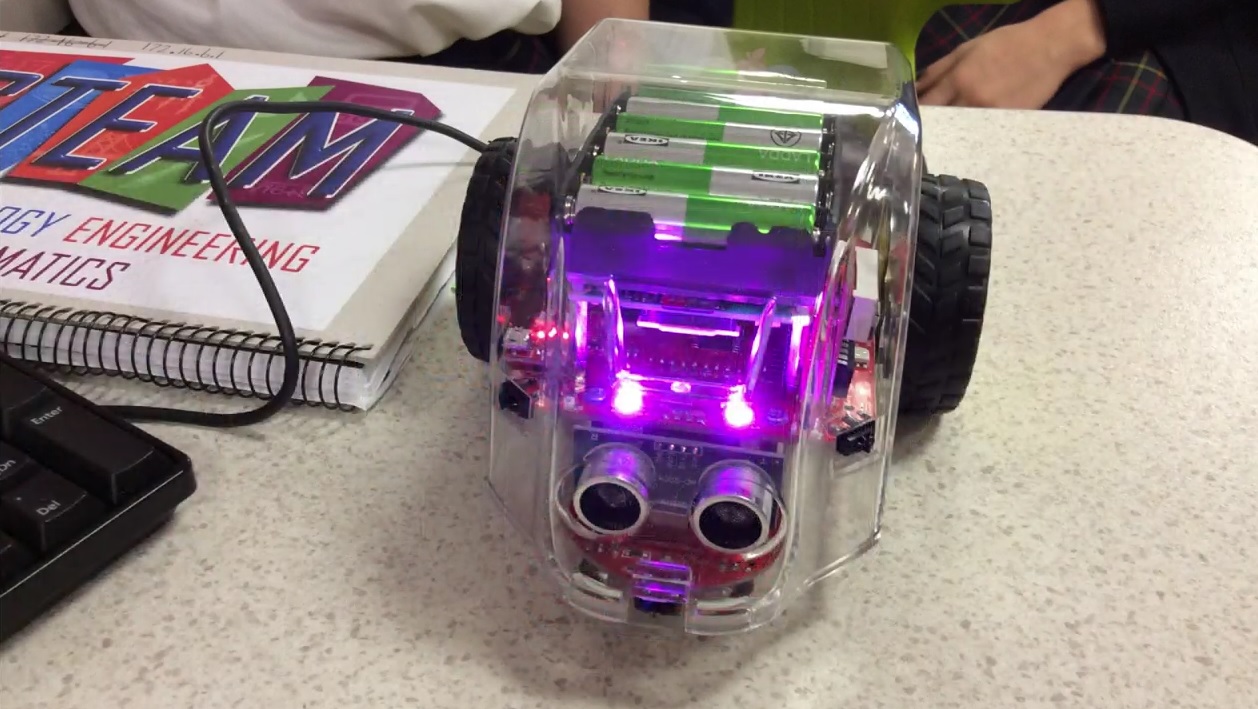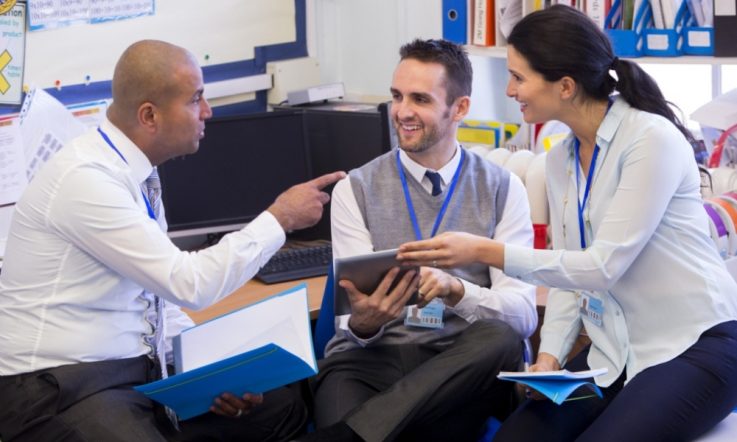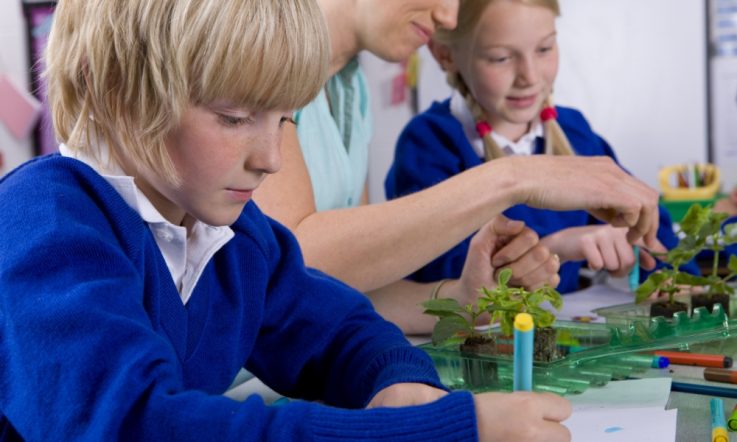In today's Q&A we speak to three teachers from Fairholme College – a regional, independent girls' school in Toowoomba, Queensland – about how they've been using real world scenarios and a team teaching approach to STEAM (science, technology, engineering, arts and mathematics) learning.
Elaine Harris and Katie Davidson are Year 6 teachers and Shane Buckley is an IT support officer attached to the Junior School. The move to introduce a STEAM project into the Year 6 curriculum began in 2016. The theme for the first unit was Utopian Cities. Students were given the task of designing a city for future generations. Considerations included infrastructure needs such as power, water supply and transport, lifestyle needs such as public services, and environmental issues such as sustainability. To complement their own skills and expertise, the teaching team also arranged for input from urban planning lecturers, project managers and urban planners from the local community.
What was the motivation for introducing the STEAM project, and what was the initial goal?
We had been using Scratch in Year 6 since 2012 to teach coding but wanted to extend our program by purchasing Pi2Go robots, which use Raspberry Pi computers – these can be programmed using Scratch. Shane and Elaine had worked on a submission to get the robots for our Junior School in February of 2016 and ultimately wanted to use a real world scenario to give purpose to our learning and really extend the girls' wonder, innovation and creativity in their learning.
Once we had the robots, our goal was to simulate a real life work environment by creating a project for the girls to work on. Using a project-based learning pedagogy allowed us to incorporate design and technology, IT, robotics, science, maths, English and the arts, and we felt that this interconnectedness of skills is very much a reality in modern work environments. Another goal was to have the girls working in different groupings, again simulating a creative work environment. They worked individually building their skills, cooperatively in peer tutoring and in their group to create their first design and finally in a collaborative group. The collaborative group was in the final phase where the groups were working on their section of the one final design. In this grouping everyone had an ‘expert' role (chosen by the group members): either a project manager, coding guru, Sketch Up engineer, designer or innovator.
How did you go about choosing a suitable project?
We spent some time brainstorming ideas and Elaine had seen amazing footage of China's ‘ghost cities'. From there, we came up with our original concept of creating a modern city that would learn from the mistakes of China's cities. This evolved over time and Katie suggested that we refine it to reimagining our city of Toowoomba with a view to making it a viable, sustainable and liveable city. Connecting with our community is also part of our teaching philosophy and as there was a focus in the Toowoomba community towards increasing sustainability this was an ideal link.
The urban planning focus [in 2016] stemmed probably from our mutual interests. Elaine has always been interested in architecture and how built environment can impact on communities and the interaction between them. This had led her to the ghost city videos but also other footage of re-designed spaces from around the world. We were able to share these with the girls to inspire them on how old spaces can be reimagined, reworked and renovated. Katie has family ties to both urban planners and project managers and we were able to use these people to share their expertise with the girls.
How much time did you allocate to the project in the classroom?
We had one hour per week and started our project in Term 2 of 2016. The final culminating event (presenting the models to the school community) was held in early November of that year. We did a mixture of explicit teaching of skills such as Scratch programming, Sketch Up and the Design Process – including organisation and time management skills with peer tutoring and constructivist approaches.
As educators, you all bring different skills and expertise – how did you approach the teaching side of things?
Katie and Elaine have formed a very collaborative approach to teaching Year 6 over the past four years, even though our classroom environment is not an open learning space. This meant that we were already used to team teaching. With the STEAM project we realised we all brought something essential and different to undertaking such a big project. Katie has a strength in design and technology. She used to have a private hobby business as a milliner and has worked in the secondary years as a Design and Technology teacher. With this experience, Katie was able to introduce a modified Design Process to the girls. They kept a design journal complete with checklists to help with time management, mood boards, research, constraints and considerations and, most importantly, reflections on their process. This is a critical aspect of our projects.
Elaine previously worked as an administrator in the mining industry and as the business manager of our civil engineering firm prior to becoming a teacher. Her strengths were the programming and CAD design aspects. However, she had nowhere near the knowledge needed to code the robots effectively and didn't have the time to upskill enough for the project. This is where Shane was invaluable. We are lucky enough to have an IT support person for our Junior School and were able to have his services for our STEAM sessions. More than that though, Shane was at our brainstorming meetings and we collaborated on creating the project, working out what we would be able to get the Pi2Gos (Raspberry Pi robots) to do. He also had the knowledge regarding the 3D printer and could troubleshoot the myriad issues that come with computing and 36 children. It was very much a joint project from beginning to end, with everyone having input and Katie and Elaine creating the design briefs, rubrics, and planning.
During the sessions, the explicit teaching or coordinating was led by either Katie, Shane or Elaine, depending on the content being given at that time, with the others as support. It was through doing our project that we realised that having all the key skills in one teacher would almost be impossible and that we were very well placed because of our diverse skills and our collaborative approach.

[Students explored sustainable transport and worked with Pi2Go robots as part of the project. Image: Supplied]
What's happened since the initial project?
Since 2016 we have continued with our STEAM projects. Last year our school was celebrating its 100th year and the Junior School was also putting in a new playground for Years 3-6. Our smaller project was to design the new playground, complete with scale drawing of their envisaged playground. The larger project was to future-proof our school and redesign it for the next 100 years. This year we have already designed pencil pots which will be printed out on the 3D printer. For our bigger project we are looking at the new Brisbane West (Toowoomba-Wellcamp) airport and designing their new cargo hub to make it sustainable and practical. This project will include excursions, talking to experts in various areas and a culminating event.
From your experience (in a primary context), what advice would you have for other educators and why was this meshing of skills and expertise so key to the success of your project?
Our advice would be to engage wholeheartedly with the project. This helps the students feel the worth and value in the work, keeps up your energy and helps everyone's enthusiasm. Working collaboratively is essential as no-one can be the expert in everything and modelling this has been key to our approach.
Teachers who would like to find out more about the project, planning and related resources, can contact Elaine Harris via email elaine.harris@fairholme.qld.edu.au
Think about a unit of work you’re due to plan and teach later this year: How does this play to your own teaching strengths, knowledge and expertise? Are there any areas where you could do with more support? Is there an opportunity to collaborate with another member of staff or bring in outside expertise from the local community?



